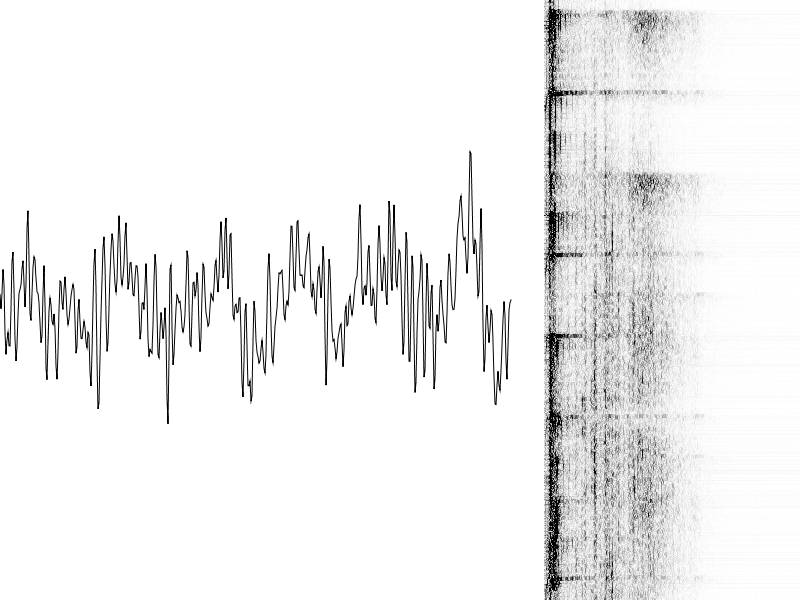A bit of S-FX fun
Last couple of days i've been poking around a bit with audio - trying to learn a bit more about how to process it digitally.
To start with I just wanted to get some visualisation up to see what sort of stuff you get out of a fourier transform.
I started in Swing but then re-started in JavaFX and came up with this little tool. A signal plot on the left and a scrolling spectrogram on the right.
I use an old trick from Amiga days to simplify the spectrogram display updates. I create a WritableImage which is twice the visibile size. When a new row of spectrogram data arrives I write it twice, at the current output row and at the current output row + visible size. This just keeps repeating forever, rolling back to the start when it overflows. Then I adjust the viewport on the ImageView to show the correct section - which is just the total output count modulo the visible row count. This creates a smooth scroll without having to write the whole display every time (let the GPU do that since it will anyway) or the need for an extra block of processing once every n frames.
So e.g. for a 256-wide spectrogram on a 600-high display:
WritableImage spectrogram = new WritableImage(256, 1200);
ImageView spec = new ImageView(spectrogram);
int spectrogramRow = 0;
void addRows(int[] srow, int rows) {
PixelFormat fmt = PixelFormat.getIntArgbPreInstance();
spectrogram.getPixelWriter().setPixels(0, spectrogramRow, 256, rows, fmt, srow, 0, 256);
spectrogram.getPixelWriter().setPixels(0, spectrogramRow + 600, 256, rows, fmt, srow, 0, 256);
spectrogramRow = (spectrogramRow + rows) % 600;
spec.setViewport(new Rectangle2D(0, spectrogramRow, 256, 600));
}
Unfortunately it's just running on the CPU (some ancient piece of shit intel graphics on this laptop) so the output isn't really very smooth at all, nor can up the spectrogram rate too high. Not that it's fast enough anyway but I don't think it helps that my laptop outputs 50Hz to it's screen and the external second screen is 60Hz, I think JavaFX uses 60Hz NTSC timing too, bletch.
Actually I dunno, it's only using 30% cpu. Must try it on my workstation.
Anyway, nothing special but it's still hypnotic enough I forgot why I started writing it.

